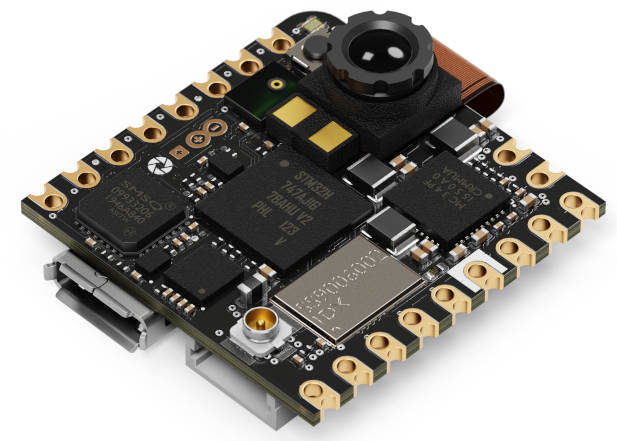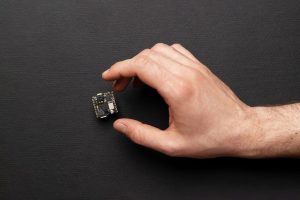
It was created by the Ardiono organisation working in partnership ST Microelectronics – in similar fashion to how Arduino worked with Thales to create the Portenta Cat M1/NB IoT GNSS Shield.
 Measuring 22.86 x 22.86 mm, it features as its engine the STM32H747AII6, a dual processor with an Arm Cortex-M7 core running at up to 480MHz and an M4 core running at up to 240MHz.
Measuring 22.86 x 22.86 mm, it features as its engine the STM32H747AII6, a dual processor with an Arm Cortex-M7 core running at up to 480MHz and an M4 core running at up to 240MHz.
To provide the vision, there is a 2MP colour camera along with support for tinyML, the mobile-friendly machine learning language for doing AI work, which is where the image processing capabilities reside, for image recognition or detection.
There are also Wi-Fi and Bluetooth Low Energy comms for communicating the results of any Vision.
Sound and vision
Note that the Nicla Vision can also capture sound, movement and vibration data. This is thanks to a smart six-axis motion sensor, integrated microphone and distance sensor.
Impressive. It’s priced at €95 in the Arduino store online.
Building automation, industrial automation and more general prototyping are the applications foreseen by Arduino.
What does that mean in practice? They’re talking, in an industrial setting, checking every product is labelled before it leaves the production line, for example. Or gesture recognition for kiosks in a consumer setting. Or maybe only unlocking doors for authorised personnel, or checking to see if they are wearing PPE correctly. Alternatively, Arduino suggests you could use AI to train Nicla Vision to regularly check analogue meters and beam readings to the Cloud…
Basically, anytime you need to act or make a decision depending on what you see, in theory you could train the Nicla Vision to watch and maybe decide for you.
The board can be battery-powered for standalone systems.
Arduino writes:
“What’s more, Nicla Vision is compatible with Portenta and MKR components. It fully integrates with OpenMV, supports MicroPython and features WiFi and Bluetooth Low Energy connectivity to complement a wide range of professional and consumer equipment. This means you can easily add ready-to-use sensors such as a camera, microphone, IMU and ToL to your projects.”
You can read more on the Arduino website.







